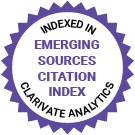JMIR Research Protocols
Protocols, grant proposals, registered reports (RR1)
Editor-in-Chief:
Amy Schwartz, MSc, Ph.D., Scientific Editor at JMIR Publications, Ontario, Canada
Impact Factor 1.4 CiteScore 2.4
Recent Articles

With the existence of various frozen embryo transfer (FET) methods currently used in the field of assisted reproductive technologies, the debate surrounding which of these is superior remains. All FET protocols aim to prime the endometrium and time embryo transfer during the window of implantation. Current methods include the true natural cycle FET (tNFET), modified natural cycle FET, artificial cycle FET, and ovulation induction. Each of these harbors, distinct advantages and disadvantages, namely, surrounding the timing of transfer and flexibility conferred through this process. More recently, a newer approach has been used whereby the need to monitor or trigger ovulation is circumvented, with luteal phase support commenced once a certain follicle diameter and endometrial thickness criteria are met but before ovulation. However, the research into this protocol has certain important limitations that our study seeks to address.

Metabolic disease is increasingly impacting women of reproductive age. In pregnancy, uncontrolled metabolic disease can result in offspring with major congenital anomalies, preterm birth, and abnormal fetal growth. Pregnancy also accelerates the complications of metabolic diseases in mothers resulting in an increased risk of premature cardiovascular events. Despite the convincing evidence that preconception care can largely mitigate the risks of metabolic disease in pregnancy, there are few data about how to identify the highest-risk women so that they can be connected with appropriate preconception care services.

Obstructive sleep apnea (OSA) is a common sleep disorder, and in pregnancy, it is associated with an increased risk of complications, including gestational diabetes mellitus and preeclampsia. Supine sleep may worsen OSA, and in pregnancy, it is associated with an increased risk of stillbirth due to effects on fetomaternal blood flow. Continuous positive airway pressure (CPAP) therapy is considered the gold-standard treatment for moderate to severe OSA, although compliance is frequently poor; positional therapy (PT) is generally less effective than CPAP in nonpregnant patients but may be better tolerated and more accessible during pregnancy. There is limited data on whether widespread, early screening for sleep disorders in pregnant women with symptoms of sleep-disordered breathing or at high risk of metabolic complications and subsequent early intervention with CPAP or PT attenuates fetomaternal risks.

The prevalence of sensory, cognitive, and mobility disabilities in Canada underscores the need to address environmental barriers. This study adapts and validates the Stakeholders’ Walkability/Wheelability Audit in Neighborhoods (SWAN) tool to assess the challenges the built environment poses for individuals with disabilities, aiming to inform policy changes for accessibility and inclusivity.

Postpartum mood and anxiety disorders (PMADs) are higher among pregnant military service women (26%) and military spouses (12.2%) compared to the civilian population (10%-15%). This is partly due to military-specific factors, including deployment, which are known to increase risk. Important risk factors for PMADs include sleep disturbances, defined as sleep deprivation, insomnia, or poor sleep quality, which are more are common among military-affiliated pregnant women.

A significant increase in eating disorder (ED) service waitlists has been observed in the past several years, exacerbating existing barriers to care (eg, long waitlists, scarcity of treatment centers, and positive beliefs surrounding pathology). Given that treatment delays have important clinical correlates (eg, entrenchment of ED pathology), exploring new methods of mental health service delivery for this population is of critical concern. App-based motivational interviewing (MI) delivered prior to the start of treatment has the potential to improve accessibility by simultaneously addressing structural (eg, travel costs) and individual (eg, low motivation) barriers to care. Despite the potential benefits, there remains a lack of empirically validated, ED-specific MI-based mobile apps. Evaluating the feasibility and acceptability of such interventions is a crucial first step before progressing to full-scale efficacy trials.

ChAdOx-1s, CoronaVac, BBIBP-CorV, mRNA-1273, and BNT162b2 are the five common COVID-19 vaccines used in Jakarta. Randomized controlled trials have provided robust evidence of the safety and efficacy profile of these vaccines, but their real-world vaccine effectiveness against symptomatic COVID-19 and deaths in communities with social inequalities and health care constraints remains unclear.

Every day, approximately 800 women die from pregnancy-related causes, alongside 2.6 million stillbirths and 2.8 million neonatal deaths annually. Inadequate referral by skilled birth attendants hinders timely access to necessary emergency obstetric care, challenging progress toward the maternal health Sustainable Development Goal (SDG) 3. The COVID-19 pandemic further disrupted care in low- and middle-income countries, forcing women to rely on traditional birth attendants, thereby affecting the referral system. It is crucial to understand the experiences of both skilled and traditional birth attendants regarding upward referrals in emergency obstetric care to identify barriers and facilitators within these systems in low- and middle-income countries.

Virtual reality (VR) has strong potential to enhance the effectiveness of telemental health care (TMH) by providing accessible, personalized treatment from home. While there is ample research supporting VR for in-person treatment, there is only preliminary data on the efficacy of telemedicine-based VR. Furthermore, the majority of VR apps used in therapy are not designed for mental health care. VR has the potential to enhance TMH through innovative technology solutions designed specifically for the enhancement of remotely delivered evidence-based practices. This feasibility randomized controlled efficacy trial aims to fill both of these gaps by piloting a novel telemedicine-based VR app (Doxy.me VR) equipped with animal phobia exposure stimuli.

Attention-deficit/hyperactivity disorder (ADHD) is one of the most widespread neurobehavioral problems during childhood. A child’s personal health record (PHR) plays an important role in the controlled routine monitoring of ADHD symptom improvement. Along with the advantages, the convenience offered by mobile technology, and the ubiquity of smartphones in contemporary society, there is a compelling need for PHR to be available in the form of a mobile app.

Childhood cancer survivors (CCS) are at risk of pulmonary dysfunction due to cancer treatments, but evidence on prevalence and risk factors remains limited. Most previous studies had small sample sizes or retrospective study designs, little information about treatments, or a lack of standardization of pulmonary function tests (PFTs) or limited their investigation to certain PFTs. Since spirometry mainly assesses the large airways but cancer therapy also affects peripheral airways, additional functional tests are needed. The nitrogen multiple breath washout test (N2MBW) is sensitive to peripheral airway damage in other patient populations, but its benefit in CCS is unknown. Therefore, comprehensive and standardized evaluation of pulmonary function after cancer treatment in childhood, using different PFTs that include N2MBW, is needed to address these knowledge gaps and provide insights into possible early stages of pulmonary dysfunction.

Many patients with nonmetastatic prostate cancer receive radiotherapy, which may be associated with acute cystitis, particularly if the volume of the urinary bladder is small. Three studies showed bladder volumes <200 ml or <180 ml to be associated with increased urinary toxicity. Therefore, it is important to maintain bladder volumes greater than 200 ml during as many radiation fractions as possible. Several studies investigated drinking protocols, where patients were asked to drink a certain amount of water prior to radiotherapy sessions. This may require considerable discipline from the patients, who are predominantly older adults. Adherence to a drinking protocol may be facilitated by a mobile app that reminds patients to drink water prior to each radiation session. This study investigates the effect of such an app on bladder filling status in patients with prostate cancer undergoing external beam radiotherapy (EBRT) alone.













